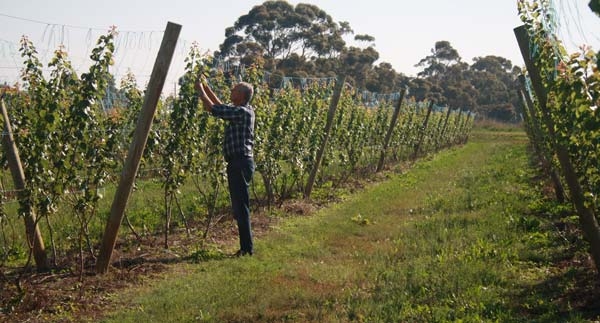(continued from last month) Features of branchless multi-leader trees include:
- After they are planted, nursery trees are headed, which helps prevent transplant shock.
- Infection by fire blight can be detected early, so that the trees will not be damaged much. When an infected leader is removed in spring or early summer, a new shoot soon replaces the infected leader.
- In research, multi-leader trees can simplify statistical designs of experiments, because individual leaders rather than whole trees, can be used for treatments.
- Many temperate, sub-tropical, tropical and ultra-tropical fruit crops adapt well to the branchless multi-leader system, making it one of the most versatile state-of-the-art production systems.
System benefits
Open-V systems, such as the Open Tatura, incorporate all of the above features.
As well, the canopy of the Open Tatura has a higher surface area that orchardists can manage from the ground, whereas (at the same spacing and density), the much taller vertical Fruiting Wall needs ladders or platforms.
When fruit trees are managed from the ground: it is easier for orchardists; labour is more efficient; male and female labour of different ages are attracted; orchardists can best manage unskilled labour.
The small trees have less internal shading than large trees.
Regulations and penalties for occupational health and safety may eventually force orchardists to work from the ground.
Platforms and other mechanical aids should not be used for orchards that are too small and risk being over-capitalised; or in countries with plenty of cheap labour.
On Open Tatura, some stone fruit with four leaders produce a crop in the second year, and most types of fruit trees reach their plateau yield within six years.
Swiss researchers have recently shown that V-shaped canopies have higher yields and fruit of better quality than vertical canopies. However, it is more expensive to establish an orchard with V-shaped trees than an orchard with vertically-trained trees.
Open Tatura usually has rows that are 4.5 metres wide, giving more space for equipment and bins to pass between rows than there is in the popular vertical Fruiting Wall with only 3.5 metres between rows.
Fruit on the Open Tatura is generally little damaged by wind. In parts of New Zealand and the USA, angled canopies are preferred where strong winds are a problem.
In 2012, an Open Tatura orchard in north Queensland, Australia, withstood cyclonic winds of 280 kilometres per hour, while free-standing trees and trees on T-trellis were ripped out of the ground.
Angled canopies are successful because the wind skims over the rough elements of the high-density trees.
Open Tatura with four leaders
- continued next month -
For more information, see Tree Fruit Sept 2014






















